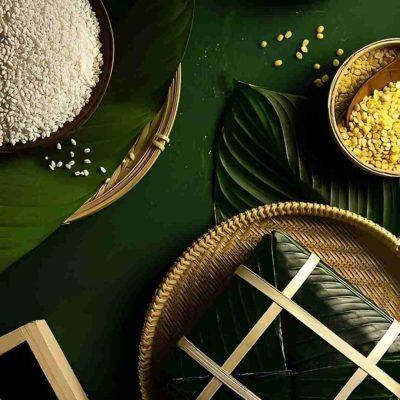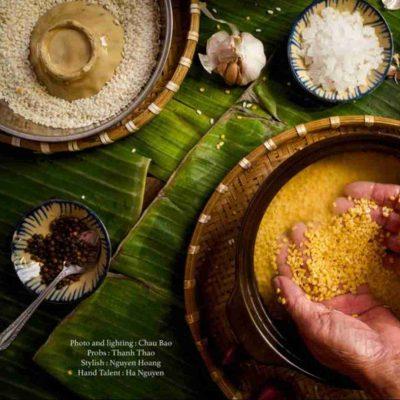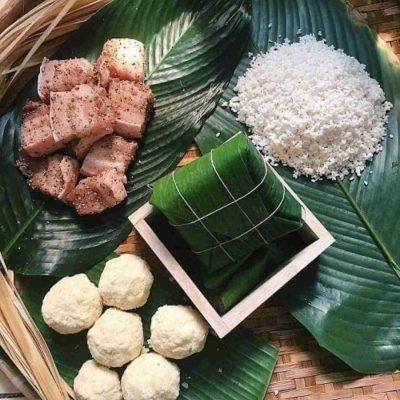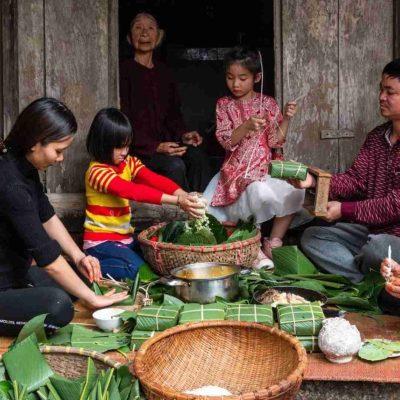Banh Chung – A Culinary Tapestry of Tet Traditions
As Lunar New Year approaches, families across Vietnam gather to celebrate Tet with joyous festivities and time-honored traditions. Among the culinary delights that grace Tet tables, one iconic dish takes center stage – Bánh Chưng. In this blog post, we delve into the rich cultural significance and cherished traditions surrounding this square-shaped glutinous rice cake, a symbol of ancestral reverence and prosperity.
Bánh Chưng’s Origins and Legend:
Historical Roots:
Bánh Chưng has deep roots in Vietnamese history, dating back to the legendary reign of King Hùng Vương VI. According to folklore, during a competition to determine the heir to the throne, Prince Lang Lieu created Bánh Chưng using simple, symbolic ingredients like glutinous rice, mung beans, and pork.


Symbolism:
The square shape of Bánh Chưng is believed to represent the Earth, while its green outer layer signifies the leaves protecting the cake. The dish embodies the profound connection between humanity, nature, and ancestral veneration.
Traditional Preparation:
Ingredients:
Bánh Chưng is crafted with precision, using glutinous rice, mung beans, and fatty pork. The rice symbolizes the rice fields, the mung beans represent the plant kingdom, and the pork signifies the animal realm. These ingredients are carefully layered and wrapped in banana leaves.

Culinary Rituals:
Families often come together to participate in the elaborate process of making Bánh Chưng, fostering a sense of unity and shared heritage. The preparation involves layering and wrapping the ingredients, followed by a long, slow cooking process, traditionally done over an open flame.
Bánh Chưng in Tet Celebrations:
Family Connection:
Bánh Chưng holds a sacred place in Tet celebrations, symbolizing the gratitude towards ancestors and the continuity of family traditions. It is often offered on the family altar as a gesture of respect and as a symbol of good fortune for the upcoming year.
Gifts of Prosperity:
Sharing Bánh Chưng with relatives, neighbors, and friends is a common Tet tradition. It is considered an auspicious gift, symbolizing well-wishes for a year filled with prosperity, abundance, and familial harmony.

Conclusion:
As the fragrance of Bánh Chưng wafts through homes during Tet, it encapsulates the essence of Vietnamese culture – a fusion of ancient legends, familial bonds, and culinary artistry. This Lunar New Year, as you savor the flavors of Bánh Chưng, may it not only nourish your body but also serve as a reminder of the enduring ties that bind generations together, creating a tapestry of traditions that withstand the test of time.


